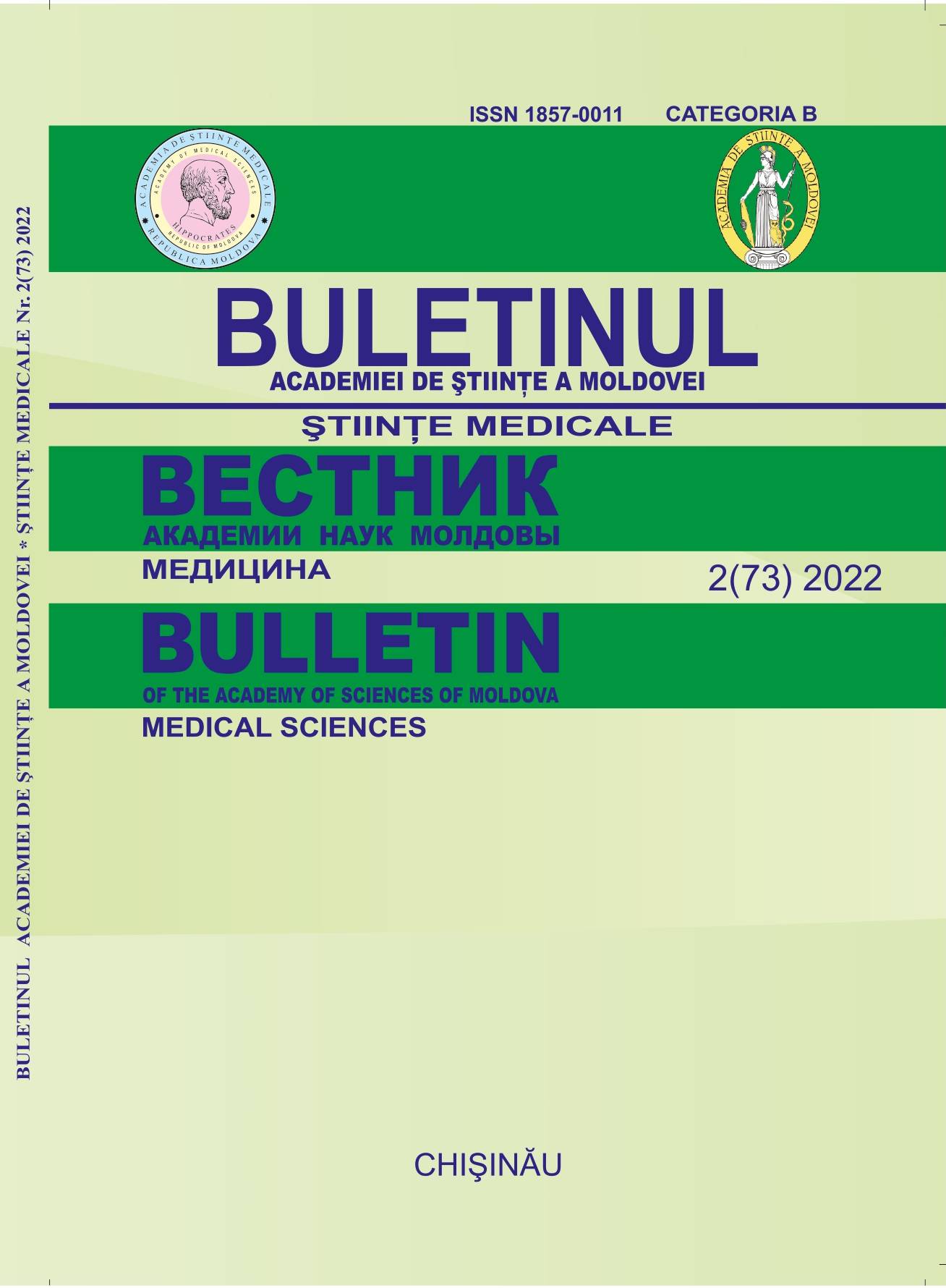Качество жизни и образ жизни детей с сахарным диабетом I типа в возрасте 12-18 лет в зависимости от способа применения инсулинотерапии
DOI:
https://doi.org/10.52692/1857-0011.2022.2-73.24Ключевые слова:
больной ребенок, сахарный диабет I типа, качество жизни, образ жизни, инсулинотерапияАннотация
Качество жизни детей с сахарным диабетом I типа и образ жизни плачевно зависят от уровня глюкозы, частоты и режима введения инсулина, особенностей диеты. В значительной степени методы подкожной инъекции, а также введение инсулина с помощью помпы также определяются типом инсулинотерапии, типом инсулина, вводимой дозой, реакцией организма, двигательными навыками и т. д.
Библиографические ссылки
Clement S. Diabetes self-management education. In: Diabetes Care. 1995, 18, 1204-1214.
Day JL. Education of the diabetic patient. In: International Textbook of diabetes mellitus, John Wiley & Sons, Ltd. 2004, 1599-1624.
De Weerdt I., Visser A.P., Kok G.J. et al. Randomized controlled multicentre evaluation of an education programme for insulin-treated diabetic patients: effects on metabolic control, quality of life, and costs of therapy. In: Diabet Med. 1991, 8, 338-345.
Golay A, Bloise D, Maldonato A. Educating people with diabetes. In: Textbook of diabetes, 3rd ed., Blackwell Science Ltd. 2003, 3810-3813.
Farmer A, Wade A, Goyder E, et al. Impact of self-monitoring of blood glucose in the management of patients with noninsulin treated diabetes: open parallel group randomised trial. In: BMJ. 2007, 335, 132.
Guerci B, Drouin P, Grangé V, et al; for the ASIA Group. Self-monitoring of blood glucose significantly improves metabolic control in patients with type 2 diabetes mellitus: the Auto-Surveillance Intervention Active (ASIA) study. In: Diabetes Metab. 2003, 29, 587-594.
http://eduforhealth.ssai.valahia.ro/pdf/Curricula_Analysis_lt.pdf (accesat 20.10.2021).
International Diabetes Federation. Self-Monitoring of Blood Glucose in Non-Insulin Treated Type 2 Diabetes. 2009.
Monnier L, Claude Colette C, Owens DR. Glycemic Variability: The Third Component of the Dysglycemia in Diabetes. Is It Important? How to Measure It? In: J Diabetes Sci Technol. 2008, 2, 1094-1100.
Moţa M (Coord). Ghidul educatorului pentru educaţia terapeutică a pacientului cu diabet. Ed. ILEX, 2010.
Nauck MA, El-Ouaghlidi A, Vardarli, I. Self-Monitoring of Blood Glucose in Diabetes Mellitus. In: Dtsch Arztebl Int. 2009, 106, 587-594.
Stettler C., Allemann S., Juni P. et al. Glycemic control and macrovascular disease in types 1 and 2 diabetes mellitus: Meta-analysis of randomized trials. In: Am Heart J. 2006, 152, 27-38.
UK Hypoglycaemia Study Group. Risk of hypoglycemia in type 1 and type 2 diabetes: effects of treatment modalities and their duration. In: Diabetologia. 2007, 50, 1140-1147.
UK Prospective Diabetes Study (UKPDS) Group. Intensive blood-glucose control with sulphonylureas or insulin compared with conventional treatment and risk of complications in patients with type 2 diabetes (UKPDS 33). In: Lancet. 1998, 352, 837-853.
Загрузки
Опубликован
Выпуск
Раздел
Лицензия
Copyright (c) 2022 Вестник Академии Наук Молдовы. Медицина

Это произведение доступно по лицензии Creative Commons «Attribution» («Атрибуция») 4.0 Всемирная.



